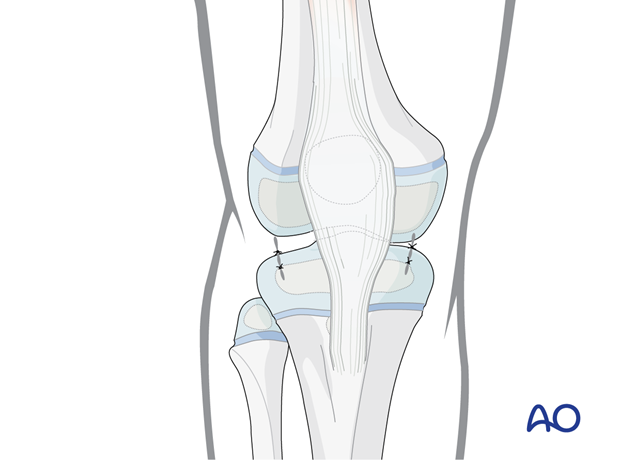Arthroscopic approach to the pediatric knee
1. Indications
A standard arthroscopic approach with anteromedial and anterolateral portals allows visualization and manipulation of an epiphyseal fracture.
The arthroscopic approach is only recommended in minimally or nondisplaced fractures, or for evaluation of the reduction quality, and experience in arthroscopic surgery is essential.
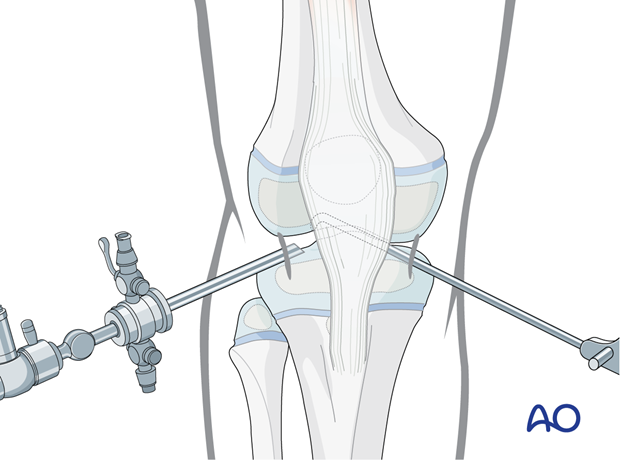
2. Anterolateral port
Identify the lateral soft spot adjacent to the patellar tendon.
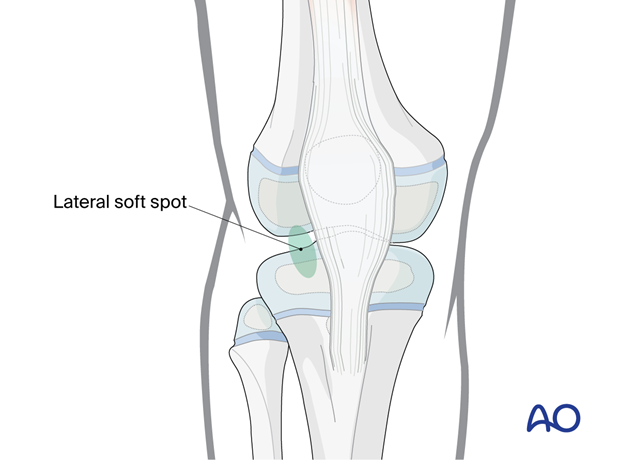
Make a 5 mm stab incision and insert the trocar and sleeve carefully, avoiding damage to the articular cartilage.
Remove the trocar and insert the arthroscope.
Irrigate the knee joint cavity until clear visibility is achieved.
Continuous positive pressure pump irrigation may be useful, but care should be taken to avoid compartment syndrome, especially if the capsule is ruptured.
Thoroughly examine the knee joint to identify associated meniscal tears, ligament injuries, and osteochondral fractures.
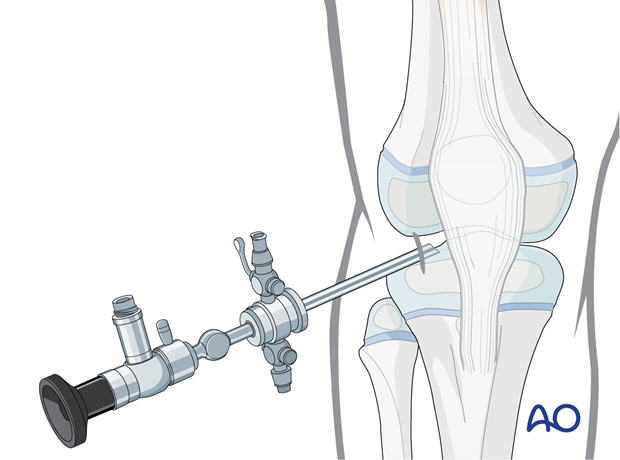
3. Anteromedial port
Identify the medial soft spot adjacent to the patellar tendon and palpate under arthroscopic control.
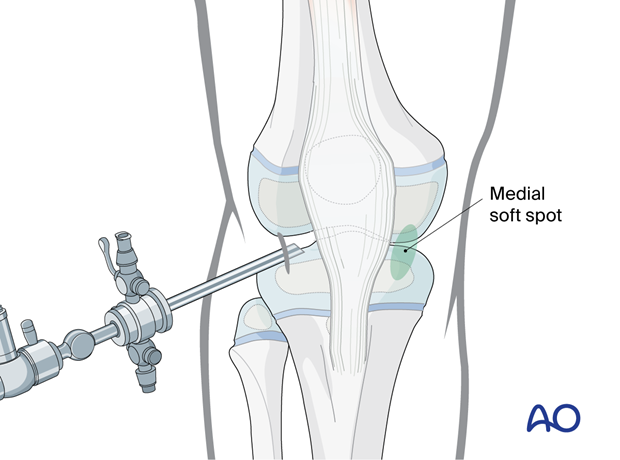
Make a 5 mm stab incision and insert an arthroscopic hook.

4. Wound closure
Close the skin according to surgeon preference.
